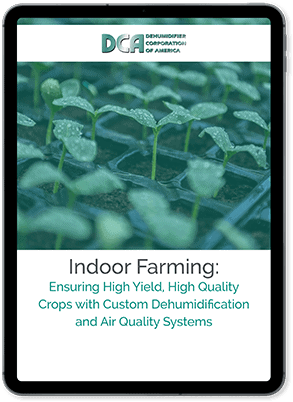Humidity is a major concern for all indoor swimming pool owners. Air-to-air heat exchangers and ventilation systems were commonly used to control pool room humidity.
 These methods are expensive to operate and wasteful, in that they constantly exhaust previously heated or cooled air outdoors. They also often fail to prevent structural damage caused by excess moisture, as the formation of mold and mildew in cold walls can cause irreparable damage.
These methods are expensive to operate and wasteful, in that they constantly exhaust previously heated or cooled air outdoors. They also often fail to prevent structural damage caused by excess moisture, as the formation of mold and mildew in cold walls can cause irreparable damage.
The most effective way to control pool room humidity is to use a full dehumidification system that serves to remove destructive moisture and add room heating as a by-product of the dehumidification cycle.
The Limits of Air-to-Air Heat Exchangers and Ventilation Systems
Air-to-air heat exchangers can be used to transfer heat to the pool room, but are as low as 70% effective, even when new. As a heat exchanger ages and becomes dirty, the efficiency levels quickly fall off. They are not designed to control humidity in pool room applications.
In the high dew point times of the year, heat exchangers can actually bring more moisture into the pool room than the dehumidification system was designed to control. In most cases, they have no way to introduce cool, dry air to the pool room — the air they introduce can only be the quality and temperature of the outdoor air. They are incapable of supplying the cool air that is so valuable in summer months.
Ventilation systems, commonly used in very large indoor pool facilities, are designed to improve air quality by venting out contaminated air from inside the facility. These systems offer no cooling services for the summer months and use a large amount of energy to heat the pool room air during cold months. By bringing in humid air from outside, ventilation systems could actually contribute to structural damage from excess moisture.
The only situation where ventilation systems alone should be considered is for large indoor water parks, where there are usually hundreds of swimmers and treated water being thrown from every direction.
The Dehumidification System Advantage
Dehumidification systems are designed to control the relative humidity of an indoor pool room. They filter the air to remove any airborne particulates and, subsequently, release clean air. Dehumidifiers can also work in conjunction with duct heaters or hot water coils to help maintain the desired pool room space temperature automatically.
When used with a remote condenser, dehumidification systems can provide warm, dry air during cold months and cool, dry air during warmer months. If desired, dehumidifiers can also help heat pool water, thereby saving energy and reducing the load on the pool water heating system.
Dehumidification System Innovation
Heat exchangers and ventilation systems normally do not provide pool rooms with dry, cool air. Dehumidifiers, however, can be used to remove hot, humid air from a pool room while adding cool, dry air.
As a result, dehumidifiers can provide comfort while also preventing structural problems related to excess moisture. It must be remembered that the primary function of a pool room dehumidification system is to protect the pool room structure.
Recent innovations in dehumidifier compressors, coils, and refrigerants have improved the overall efficiency of the dehumidification process. Electronic digital controls, along with modern web based communications, can allow the operator to monitor pool room conditions from a remote location.
DCA is Here to Help
Improvements in dehumidifier efficiency have led to more cost-effective solutions for pool rooms of any size. Contact us today to learn more about how a full dehumidification solution could be applied to your pool room. To learn more about swimming pool room dehumidifiers, click here or the link below to download our Troubleshooting Guide for Swimming Pool Room Dehumidifiers eBook.
Topics: Dehumidifiers





